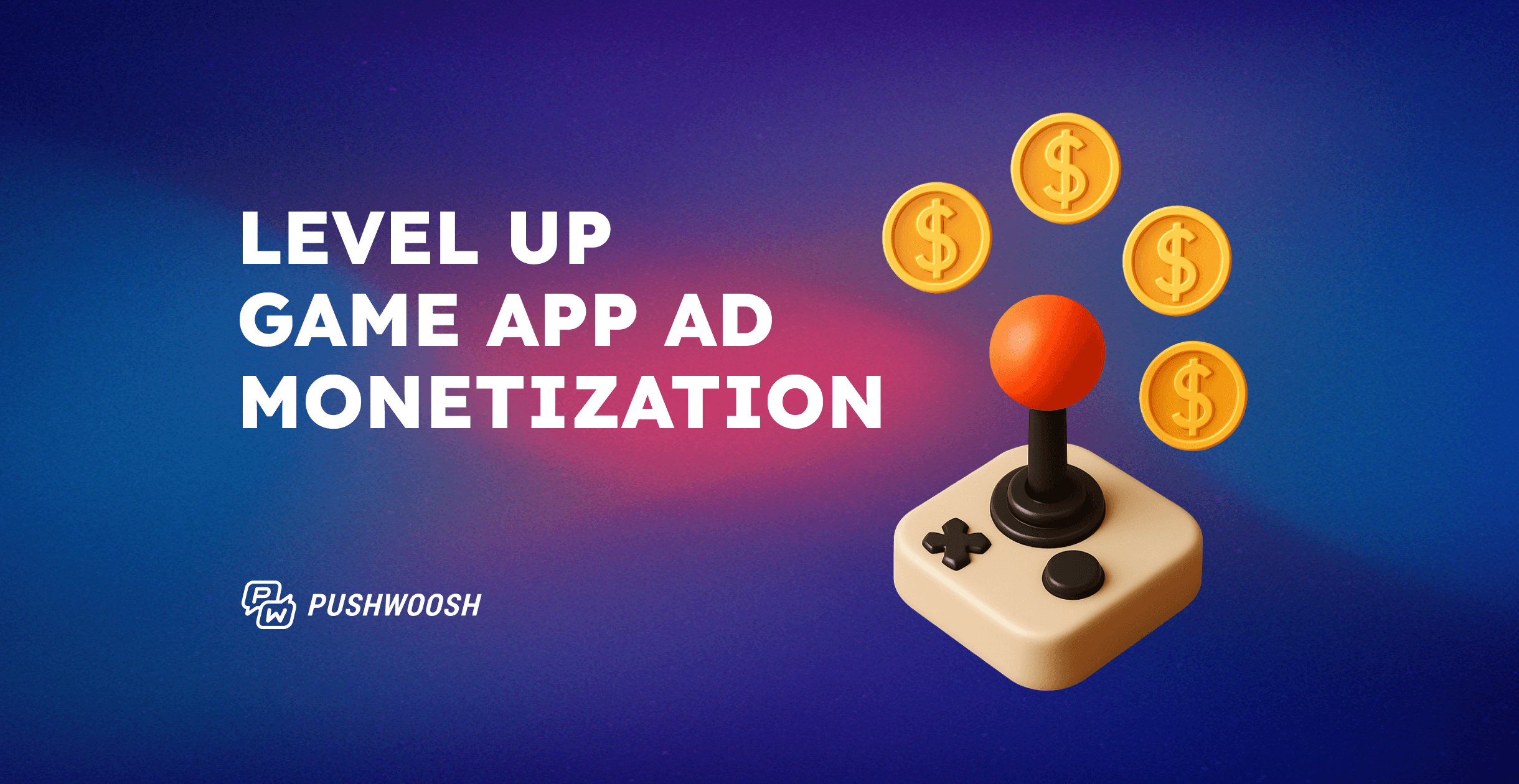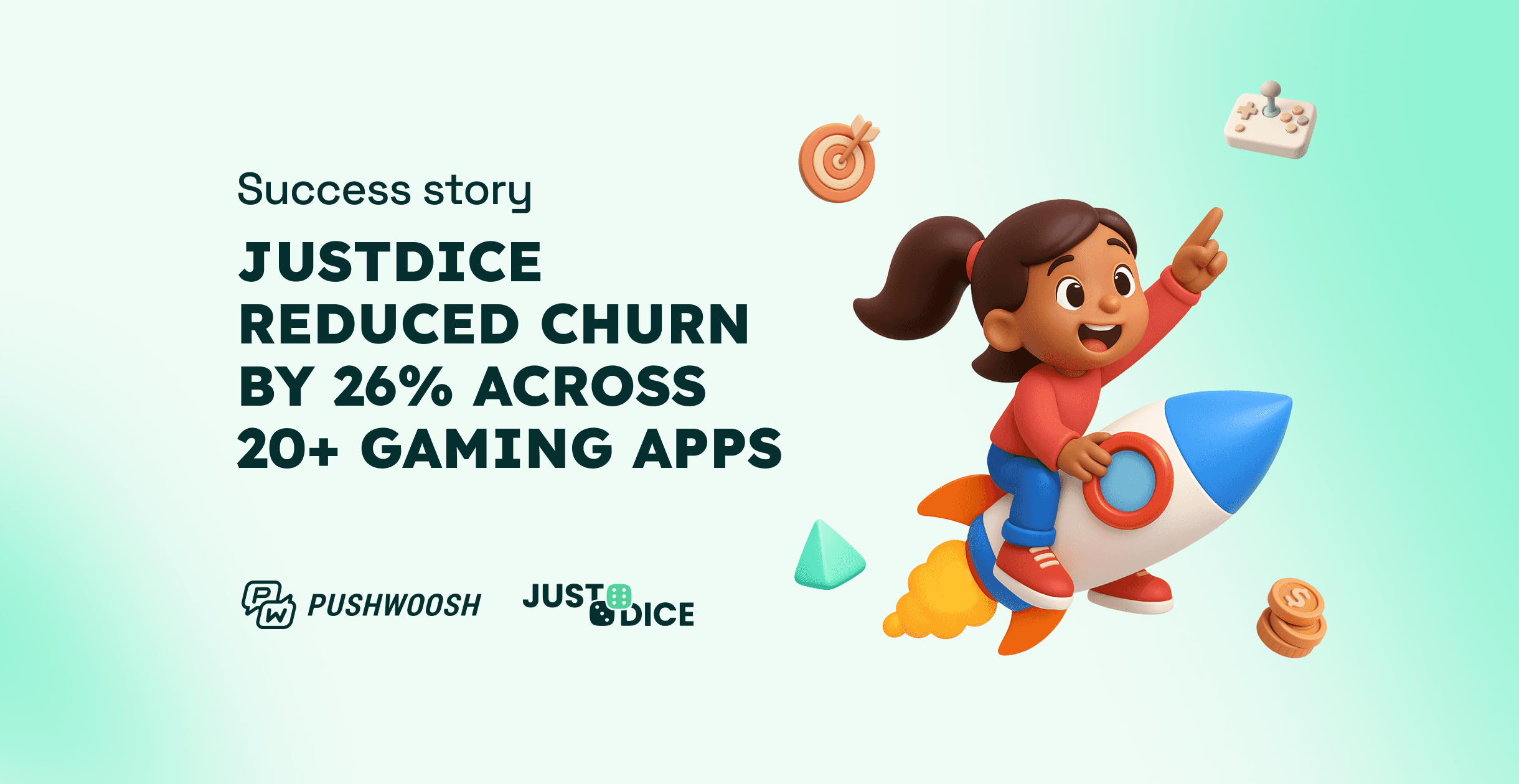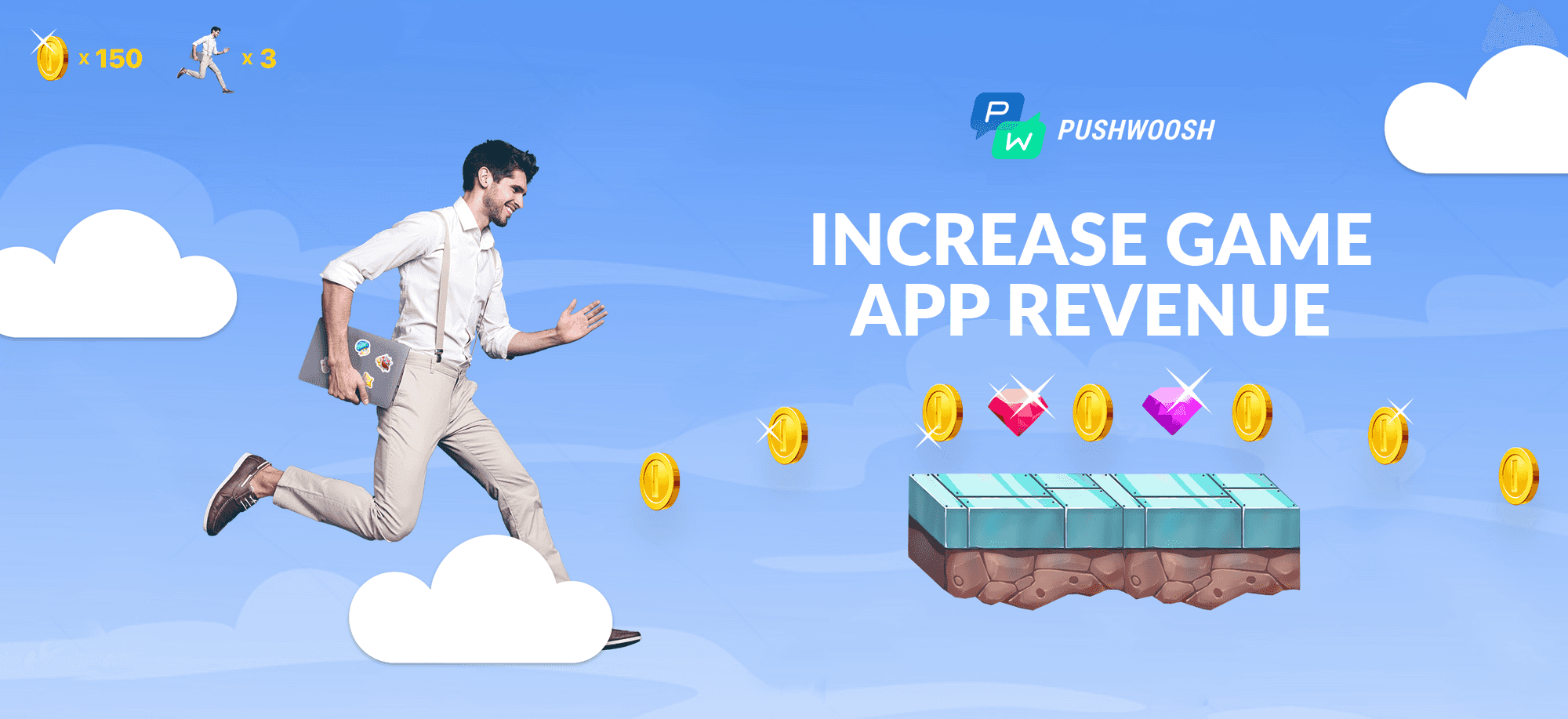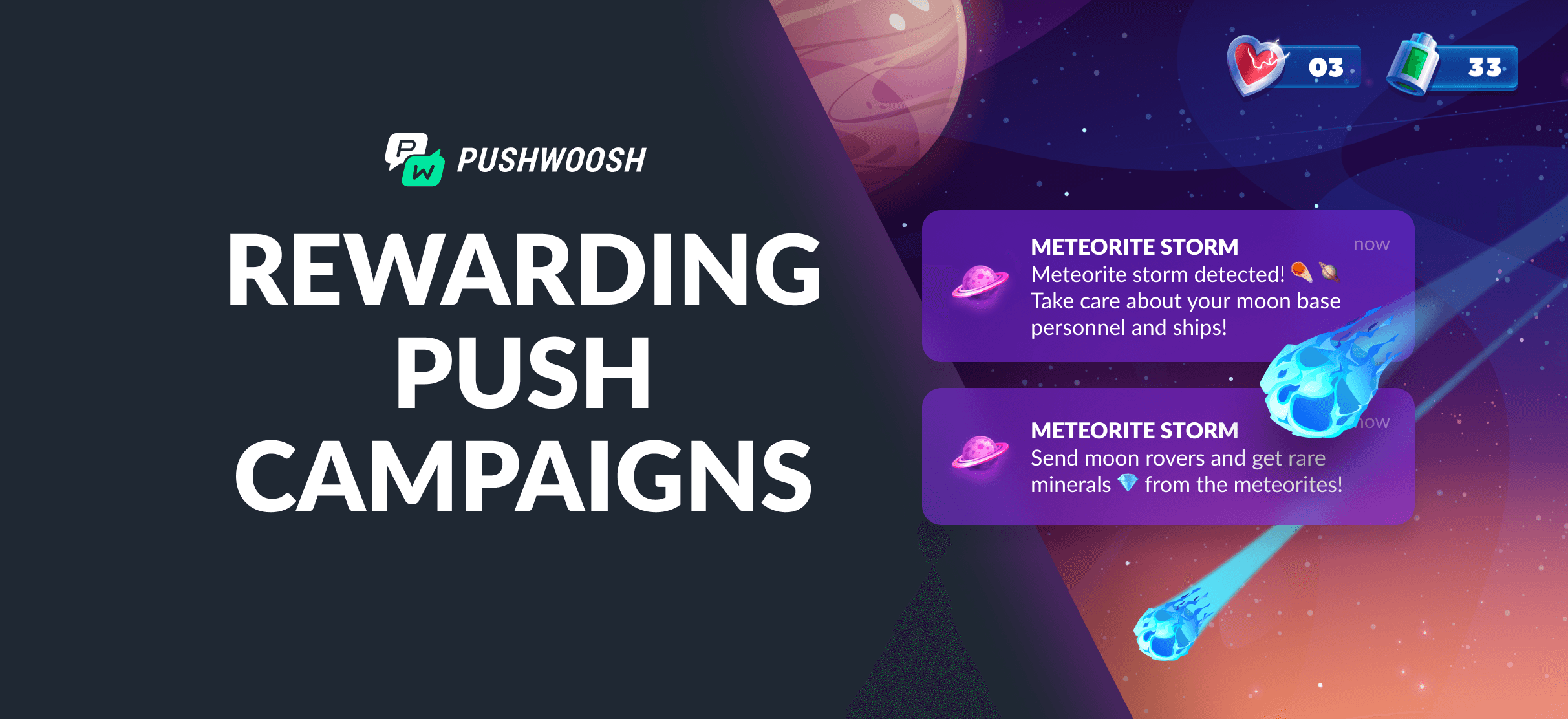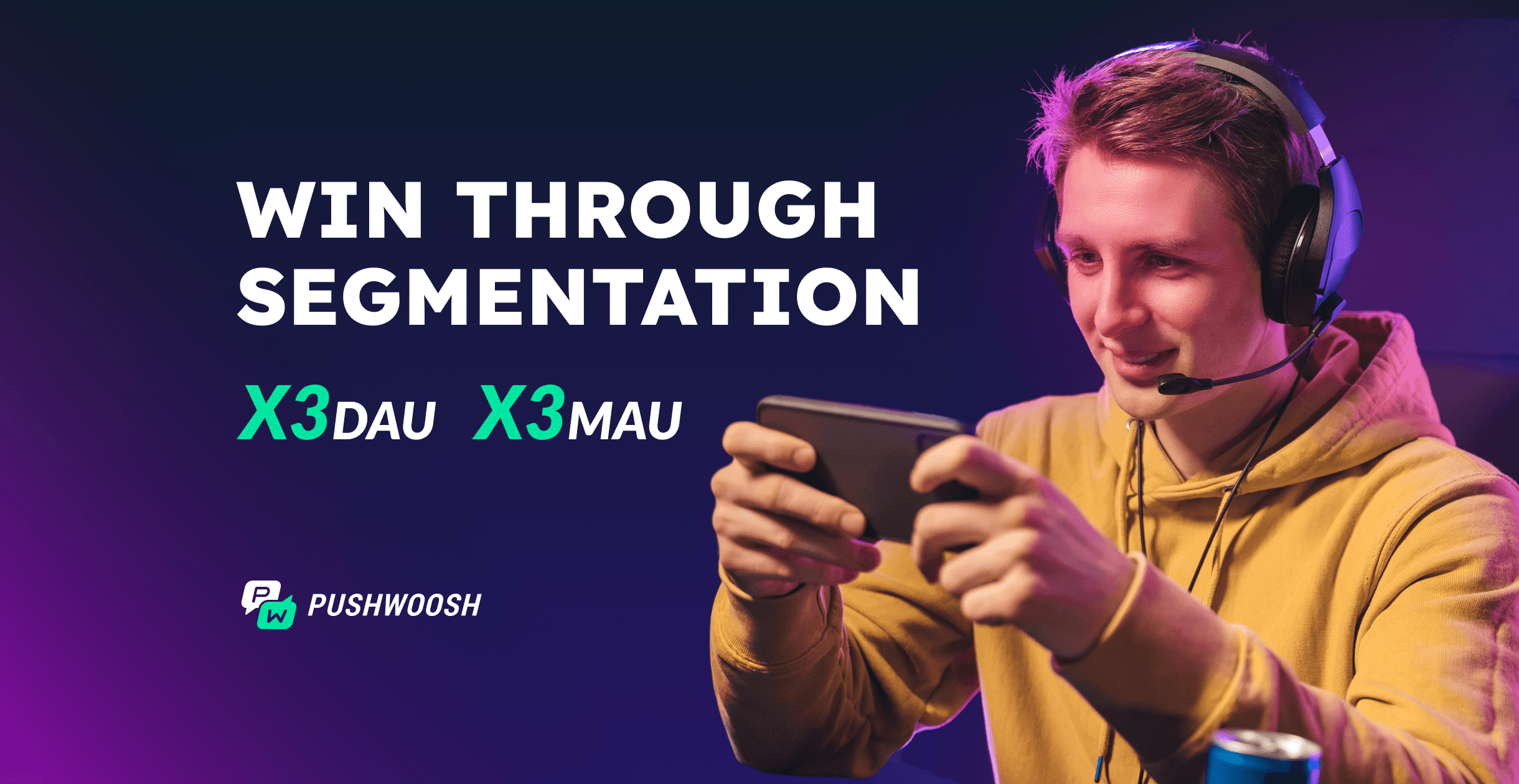How to optimize your mobile game ad monetization strategy
Finding the right balance between game ad monetization and retention is one of the trickiest parts of running a free-to-play game. Push too many ads, and you lose your players. Hold back, and you leave money on the table.
This guide will help game developers take the ad monetization effectiveness of their mobile game to the next level. We’ll break down how to optimize your ad monetization strategy — from choosing the best ad formats for your game app to advanced ad monetization practices.
Pushwoosh helps leading game publishers like justDice, Bladestorm, and Beach Bum send personalized, behavior-based messages that keep players engaged, and, as a result, support stronger monetization. We’ll show you how to put it into play as we go.
Choosing ad formats for your game
Selecting the right ad formats is crucial. The goal is to integrate ads in a way that feels natural to the game experience and fair to the player. Let’s break down the most effective ad formats used by most successful games in the industry.
Interstitial ads
What it is: Full-screen static or video ads shown between game screens (e.g., between levels or on pause).
Best for:
- Placing in the transition between game levels.
- Showing on a loading screen.
- Appearing after a player pauses the game and before they resume.
Banner ads
What it is: A small, rectangular ad that remains in a fixed position at the top or bottom of the screen during gameplay.
Best for:
- Hyper-casual or simple puzzle games with a static UI.
- Games where the banner will not cover crucial UI elements or natural breaks in the experience.
Rewarded video ads
What it is: Opt-in ads that offer users something valuable (extra life, coins, retries) in exchange for watching.
Best for: All game genres, especially when you want to balance monetization with retention. It’s one of the best-received ad formats.
Players feel in control and view the ad as an opportunity, not an interruption. This format can even improve retention by helping players overcome a difficult level.
Playable ads
What it is: A highly interactive, full-screen ad that offers a mini-game or a small, playable demo of another app or game. Often more engaging than a standard video ad.
Best for: Cross-promoting other games from your own development portfolio.
When done well, it feels less like an ad and more like a fun, bite-sized game. Playable ad can lead to higher-quality installs because players already know they enjoy the core gameplay loop.
Offerwalls
What it is: An in-app marketplace where players can choose to complete various tasks (like taking a survey, installing another app, or signing in) in exchange for in-game rewards.
Best for: Mid-core, RPG, or simulation games with strong economies and users who are highly engaged but not spending.
An offerwall is a destination that players visit when they are highly motivated to earn currency. It should feel like a feature, not an ad.
These in-app ads for games can be tailored to your audience for higher engagement and mobile game ad revenue optimization.
Advanced ad monetization strategies to increase revenue
Once you’ve chosen your ad formats, the real work begins. Driving monetization starts with showing the right ad to the right player, at the right time.
The following practices will help you optimize your ad monetization strategy for your mobile game.
Leverage rewarded video ads to balance retention & monetization
Rewarded video ads remain one of the best ad monetization strategies for games, providing the delicate balance between player retention and revenue.
When offered at the right moment, they drive engagement, boost retention, and even increase IAP conversion by giving players a taste of premium features.
The key to success is context and timing. Rewarded ads work best when players need a helping hand or are most emotionally invested.
Check how often a user has attempted to complete a level or a stage. Create triggers for these cases. If things are getting too hard for your players, give them an extra helping hand by offering them rewarded video ads.
With Pushwoosh Customer Journey Builder, you can trigger rewarded ads exactly when players are most likely to engage and send them “just-in-time” offers.
For example, when a player runs out of lives or currency, you can instantly trigger an in-app message like “Earn an extra life by watching a short video.”
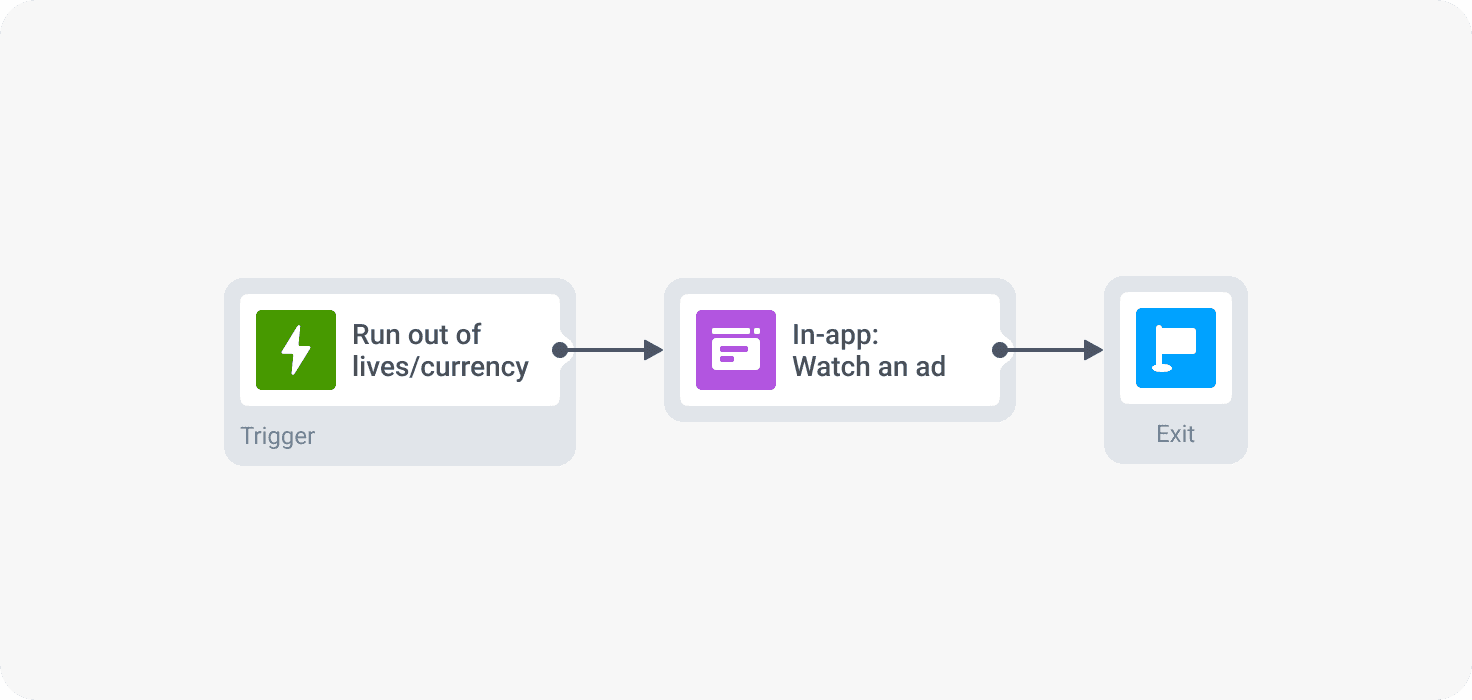
This kind of contextual prompt has been shown to drive opt-in rates as high as 15–30%, reduce churn at critical moments, and increase daily ad revenue.
Personalize ad experiences by segmenting players
Personalizing your ad strategy starts with understanding one core truth: not all players behave (or monetize) the same way.
Players differ by region, preferences, and how they engage with your game, and those differences should guide how you approach ad monetization. Tailoring your strategy to these variations can lead to significantly better results.
By segmenting your players based on their behavior and value, you can deliver tailored ad experiences that increase revenue without hurting retention.
In fact, segmentation doesn’t just protect the user experience — it can actively boost revenue. According to Appodeal’s Growth Guide, users who interact with rewarded ads during the first-time user experience (FTUE) are five times more likely to convert via in-app purchases later. Smaller, behavior-driven segments are especially useful when testing new ad formats or optimizing ad pressure.
With Pushwoosh, you can effectively segment your users by their behavior, automatically adjusting ad formats and messaging.
Example: A daily push notification is sent to ad-engaged users with a message “Watch today’s video and get your bonus.”
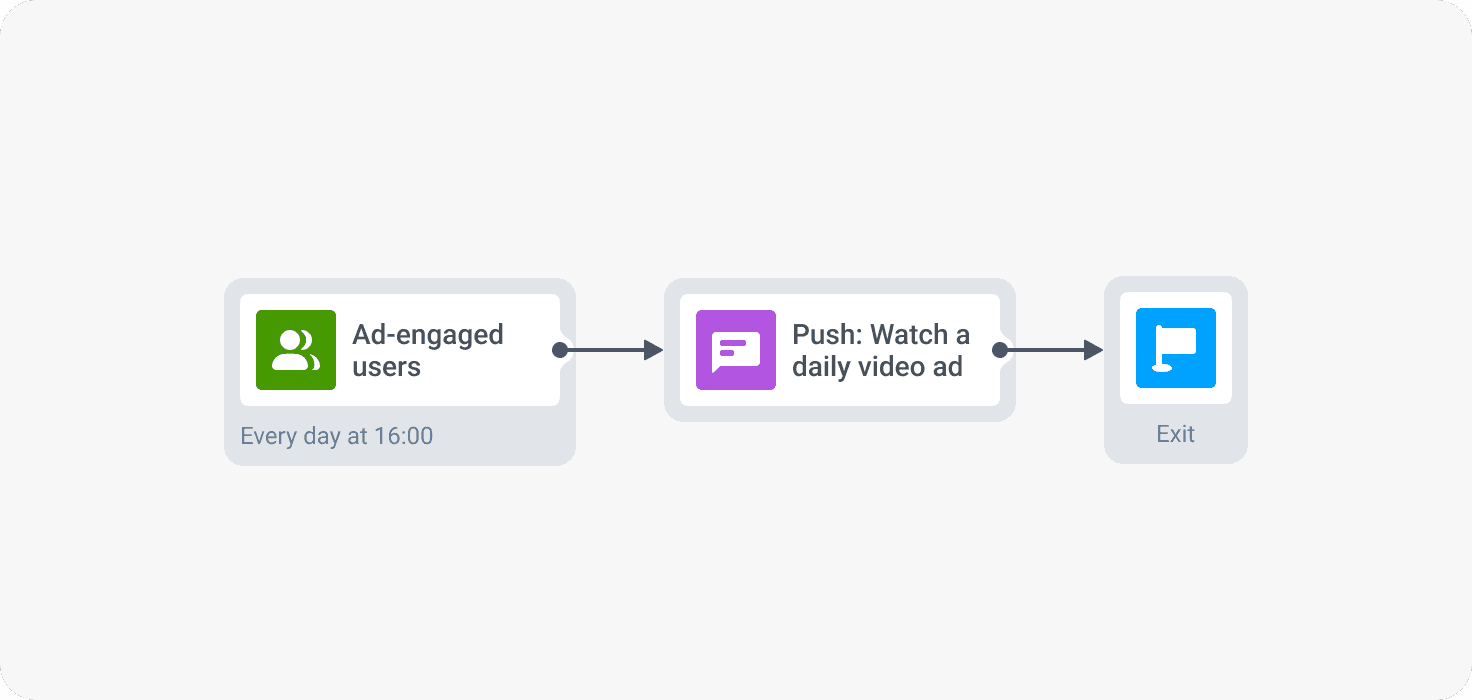
This journey alone can show an 8–15% increase in rewarded ad impressions per user, contributing to daily ad revenue.
A/B test ad placements & messaging for peak performance
Even the best ad strategy can underperform if your timing, placement, or message is off. That’s where A/B testing comes in, allowing you to continuously refine how, when, and where ads are delivered based on real user behavior.
Free-to-play games are the perfect environment to A/B test your advertisement placements, optimize the ad frequency of your rewarded videos, and even offer new rewarded in-app features.
You can experiment with multiple variants of ad-related messaging, such as push notifications promoting rewarded videos, and test delivery times, copy, or segment strategies.
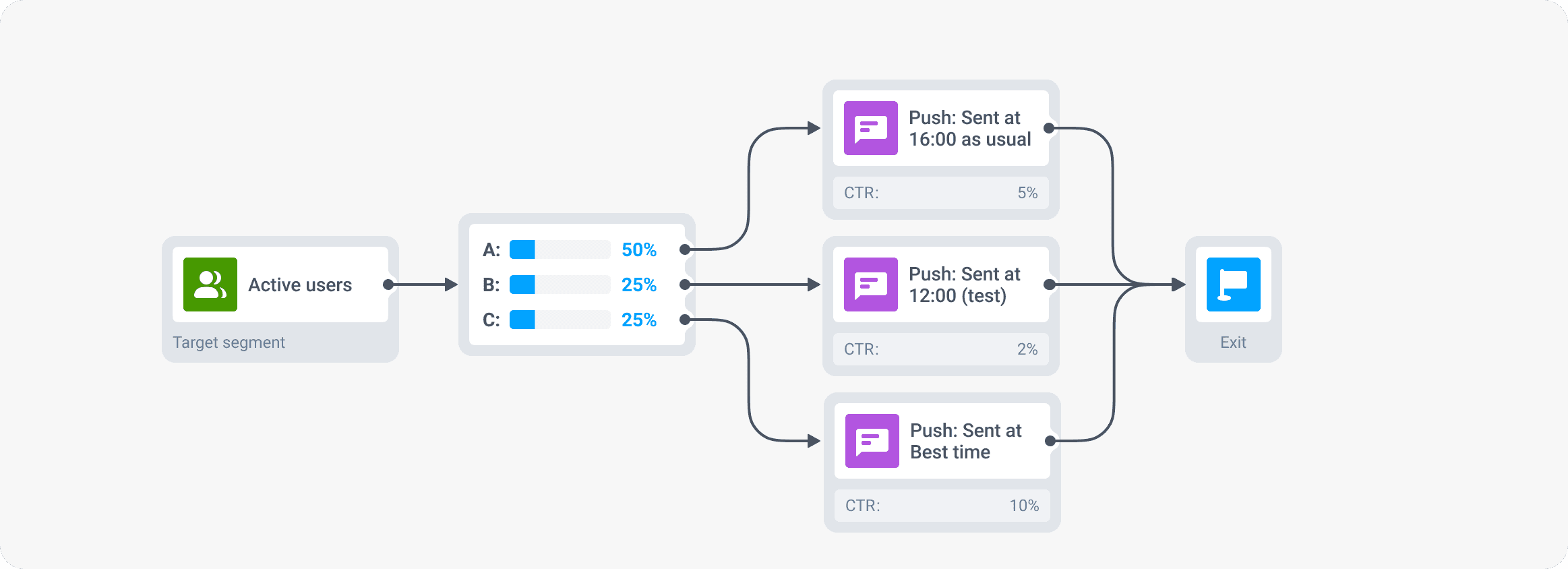
Pushwoosh tracks results in real-time, shows CTR performance and conversion goals, so you can easily choose the winning version and scale it.
Align ad monetization strategy with UA campaigns
Ad monetization works best when it’s consistent with the promise made in your UA campaigns. The acquisition channel, ad creative, and user intent all influence how players will interact with your game, and with the ads inside it.
For example, players acquired from a campaign highlighting “compete in live tournaments” could be guided straight into their first tournament and offered a rewarded video to double their entry rewards.
This creates a seamless link between what caught their attention in the ad and how they experience it in the game, while monetizing from day one.
As Marc Llobet explains:
Use your UA data to understand player interests. Analyze elements such as the key message of your ad creatives, target audiences, promoted game features, and the campaign theme (e.g., calendar events like Christmas or Live Ops). You can even use this information to customize in-game offers and IAP prices.
Build lifecycle messaging to drive long-term ad revenue
A player’s value isn’t determined in a single session. To succeed, you need to think about the entire ad monetization lifecycle and integrate ads seamlessly into the player journey. By using lifecycle messaging in game apps, you can capture revenue opportunities at every stage while keeping retention high.
Here’s how the ad monetization lifecycle can work for game apps:
- Early stage (first 7 days): Introduce ads gradually by letting users try premium features without payment.
This creates a positive first experience — essential for turning new players into long-term users who will eventually engage with ads.
Example: Target registered users with a push message offering a welcome bonus.
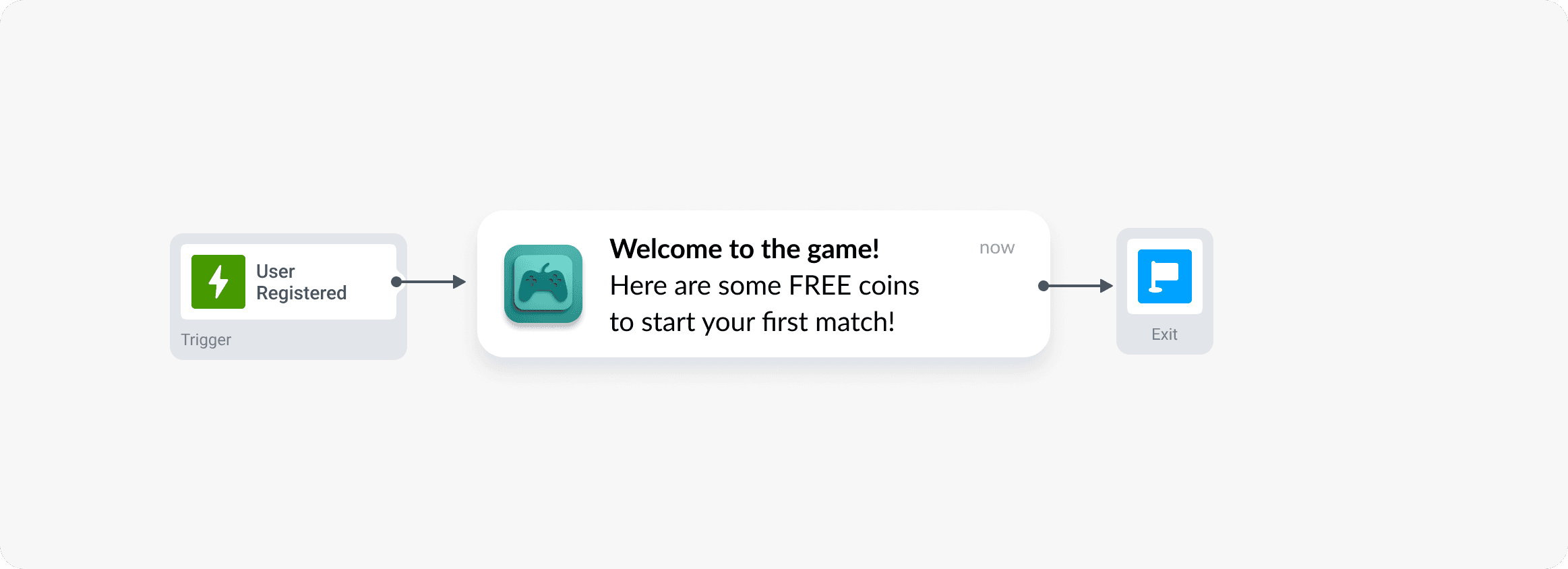
- Habit-building for engaged players: Once players are active, use recurring offers to make ad viewing a habit.
Well-timed, personalized ad rewards keep players coming back and increase both impressions and ad revenue.
Example: Target users who complete a certain level, offering them a boost like extra lives or coins in exchange for watching a sponsored video.
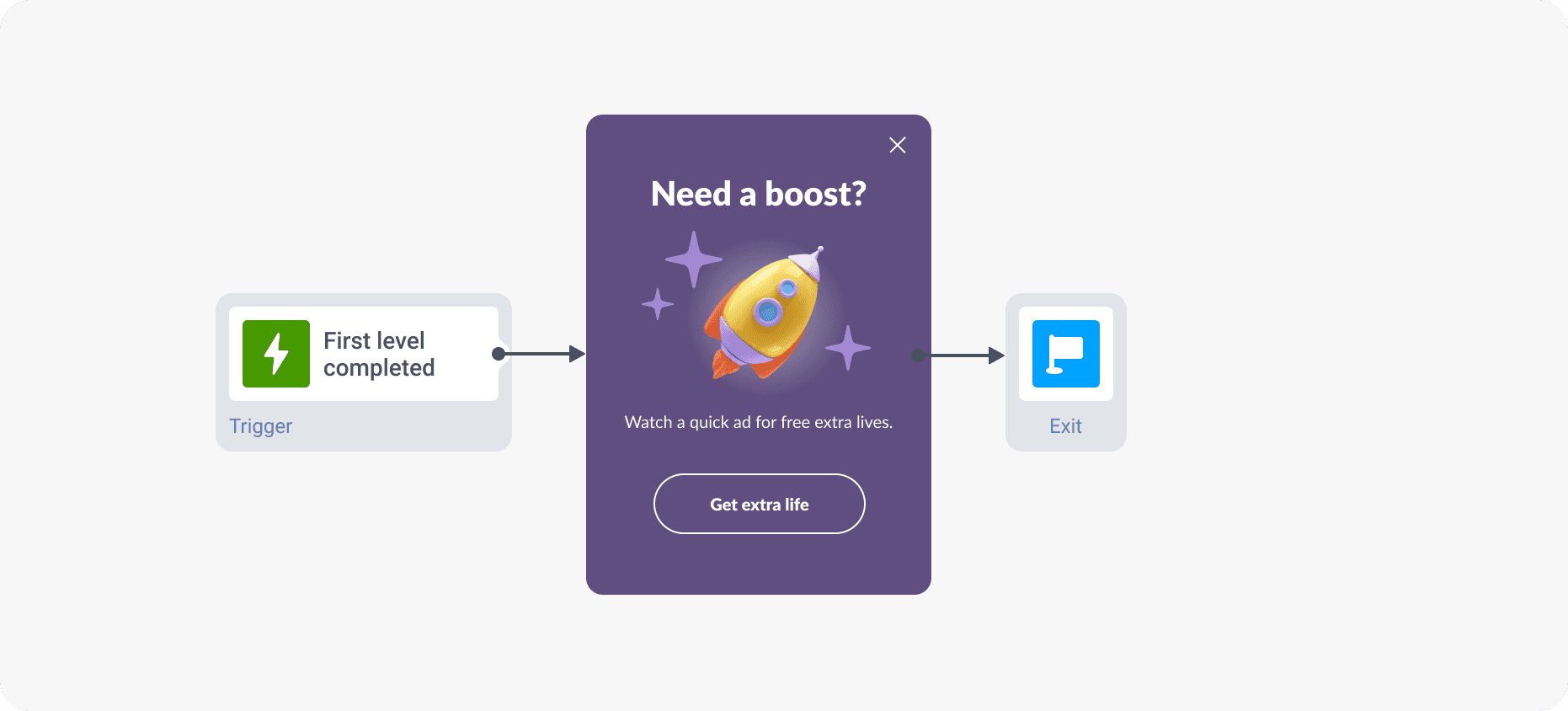
- Re-engagement: Win back lapsed players with ad-driven offers that feel valuable, not intrusive.
For example, offer sponsored video rewards to help stuck players progress.
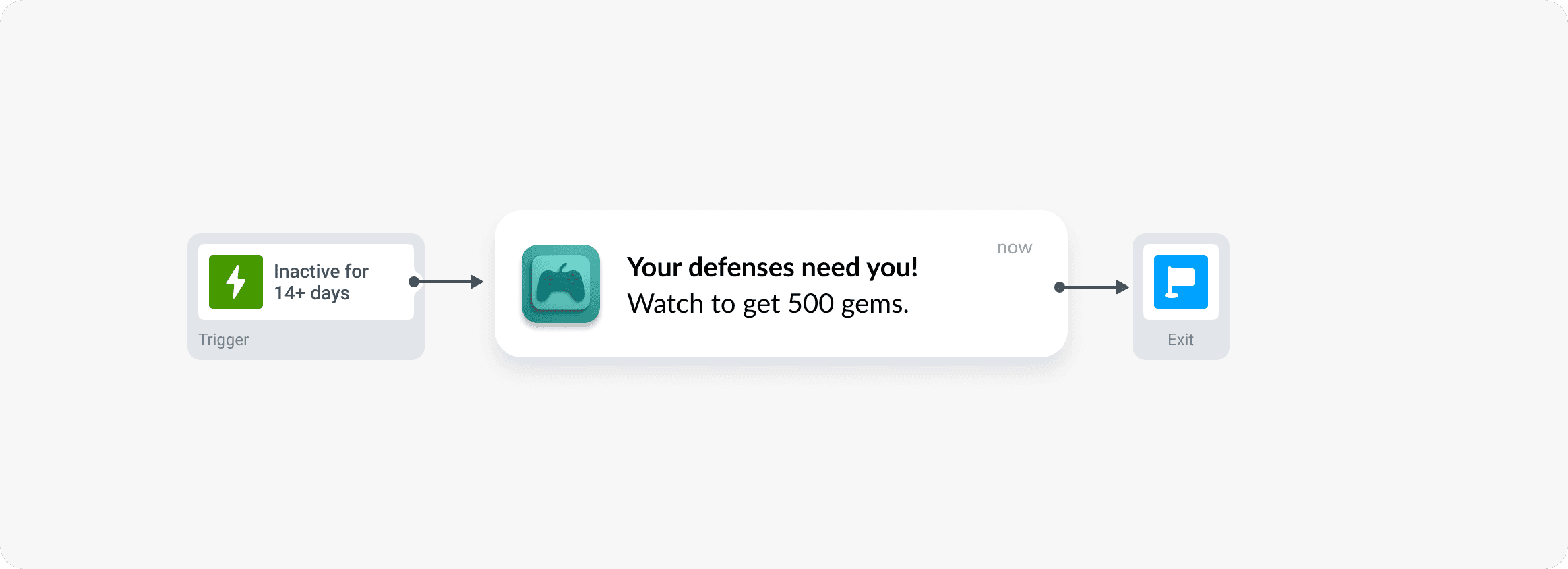
💡Cross-promotion tip: If you operate multiple games, target dormant players with a playable ad for another title in your portfolio (or a partner’s game) to re-engage them and extend LTV.
(Extra) Troubleshooting common ad monetization issues
It may occur that you’ve optimized your ads for monetization, but eCPM, fill rate, ARPDAU, or ad LTV still don’t match your expectations. Your actions?
Spot the signals early and adjust your ad monetization strategy before small issues become big revenue losses. Here’s a quick way to diagnose the problem and revisit the relevant strategy:
Low ad impressions → Revise your ad placement strategy and ensure formats fit naturally into the game loop. Experiment with ad copy and timing.
Strong impressions but low revenue per player → Personalize ad experiences to make them more relevant and valuable.
High early revenue but fast player churn → Consider launching lifecycle messaging campaigns to keep players engaged longer.
High-value players avoid ads entirely → Offer rewarded video ads to make ad engagement optional yet enticing for top segments.
Ready to level up your game ad monetization?
Optimizing ad monetization is all about delivering the right experience to the right player at the right time.
Pushwoosh gives you the tools to make it happen: precise segmentation, behavior-based triggers, lifecycle messaging automation, and real-time testing. These tools help you to boost ad revenue without hurting engagement, and to turn every player interaction into a monetization opportunity.


